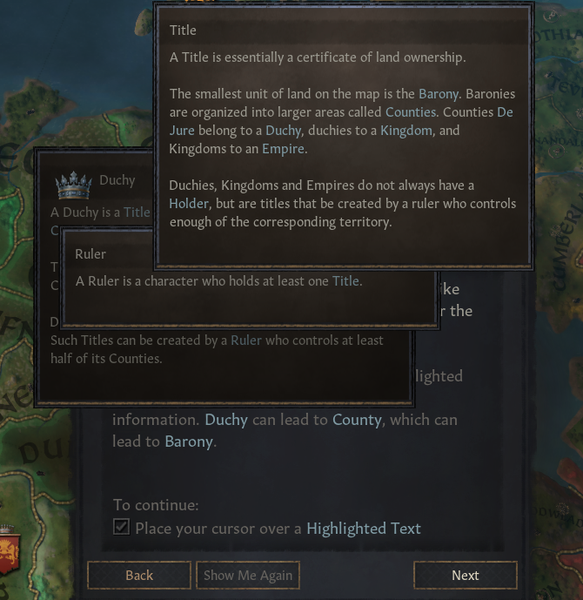Welcome back!
This will be my seventh post on my design blog. Today I will be discussing the information that we learned in the seventh week of my Game Systems Design class. As I have said in my previous posts if you follow this blog, I would appreciate any feedback you may have. Anything at all, whether it is critiquing the design of my game or giving me inspiration/recommendations.
This week:
To start this post today, I am going to talk about Module II for the last time, the module that I have been discussing for the last two weeks. This module is called Fundamentals of Gamification: Learning to Prototype. The lesson we learned during the final week of this module is about getting a lay of the land. This basically means that I am going to talk about tutorials in video games, and the plans that I have for how my tutorial will work.
Tutorials in games are very important. They are used to introduce the players to your game's specific mechanics. It allows them to understand what they are actually supposed to do in your game. Now there are various different types of tutorials that are out there. You can have tutorials that are very defined, that are expansive, and either text-heavy or direction heavy. On the other hand of the spectrum, your game could practically have nothing as a tutorial and that could be just as legitimate as the expansive tutorial if that is what fits the theme of the game you have created. In this type of tutorial, you don't tell the player anything and let them figure it out as they play.

There are tons of examples of games with either of these types of tutorials. For example, a game that I have played recently called Crusader Kings III was extremely tutorial-heavy and basically flooded you with tons of textual information. The game's tutorial is it's about a 20-minute experience, mostly walking you through all of the different menus (there are a lot) and explaining some of the basics like combat and constructing buildings. In my opinion, this is one reason why I never ended up following through with this game. All of the systems were so advanced that it is practically impossible to learn how to play this game without completing the tutorial.
Another game I have played recently is actually the exact opposite of Crusader Kings III tutorial-wise. The game Minecraft does not have an actual tutorial. The player is just thrown into this never-ending world and isn't told anything. As the player, you quickly start to explore and see what you can do. The game does not tell you the main mechanics of the game the player has to figure them all out on their own. The player is never told that they can not break stone with their fist, they have to figure that out by crafting a pickaxe. When Minecraft first originally came out the game did not even show the player the game crafting recipes. Now it is a feature that has been implemented into the game, however, when I first played Minecraft you had to figure out all of the recipes for crafting on your own, through trial and error. This is a starch contrast to a game like Crusader Kings III that holds your hand the entire beginning of the game until you are fully spoon-fed all of the mechanics.
Personally, I have always liked games that had less of a tutorial and left it up for the player to figure everything out. Elden Ring, Dark Souls, Hollow Knight, Terraria, DayZ, ARK Survival, Rust, and Valheim are just a couple examples of some of my favorite games that all have little to no tutorial to guide the player. This is why I am going to stick with this method for my game and go with a minimal tutorial. Now there will definitely be some kind of small system in place to guide the player on the right path. However, once the player is on the right path I would like to end the tutorial in order to let the player feel like they are actually learning and advancing in the game on their own without some kind of help.

For my own personal tutorial in my game, I would like to keep it pretty basic. I want the player to figure out the controls on their own. However, I would like to teach the player the main objective of the world through the interactions that I mentioned previously would be scattered around the world. The player will be able to interact with these objects like the tombstone I previously created, and when the player presses E near the interactable it will make text pop up on screen giving the player a sense of what to do, kind of like Elden Ring/Dark Souls.
- kishōtenketsu (Japanese design concept)
- ki
- opening
- shō
- development
- ten
- turn/twist
- ketsu
- close
This design concept is similar to what I talked about last week with The Embryo model by Dan Harmon and the Hero's Journey model which were both diagrams used to structure the narrative you are creating.
Apologies for the shorter post today, I felt there was not much more to get into on the tutorial since I am going to have it very open so the player can feel like they are learning the mechanics themselves.
Thank you for reading my seventh post on my blog. In my next post, I will be going over module III for the first time. I will go over all of the information from Week 8: Friends and Enemies as well as give more insight into the design of my game. Any feedback is greatly appreciated! Please leave a comment!

